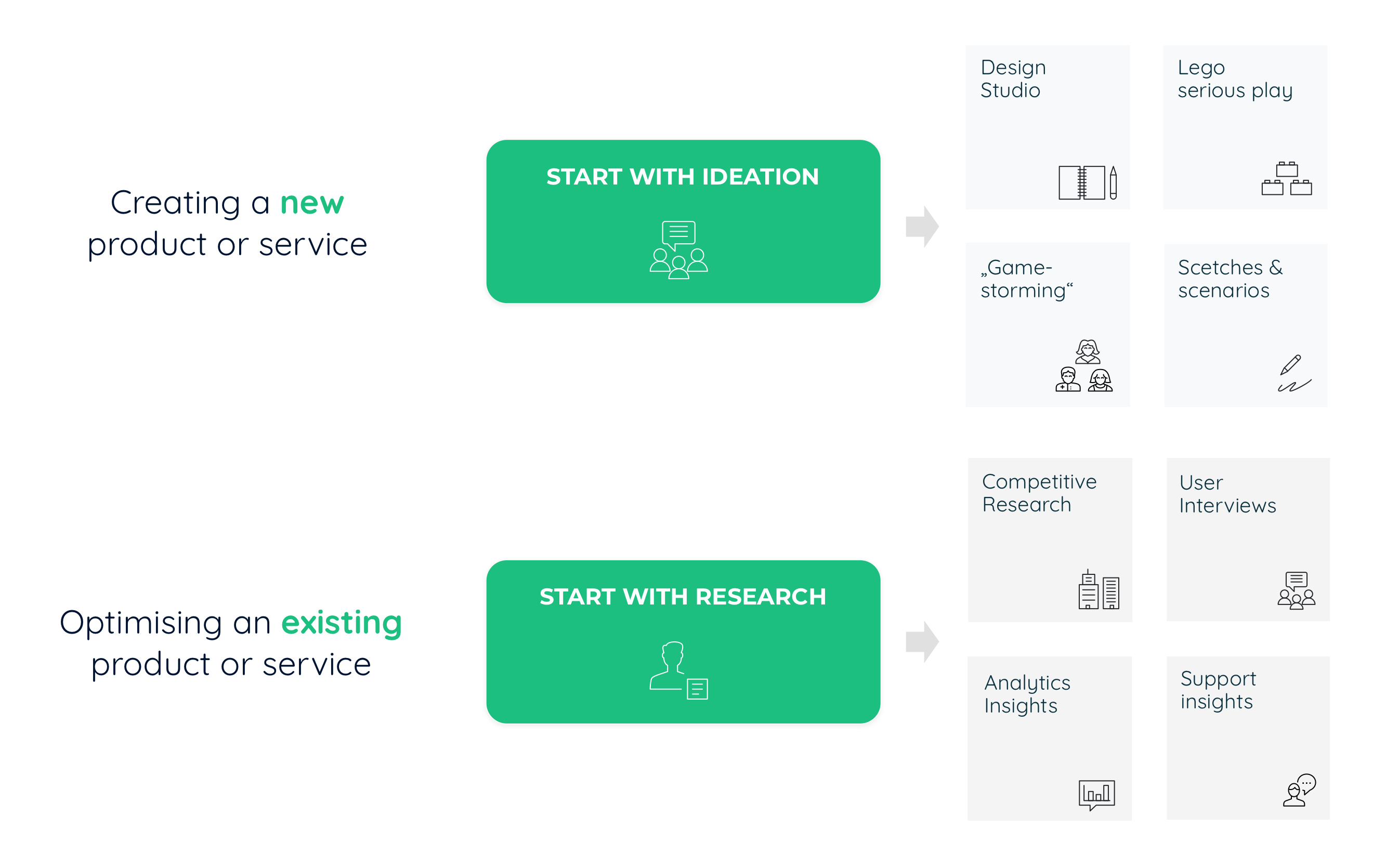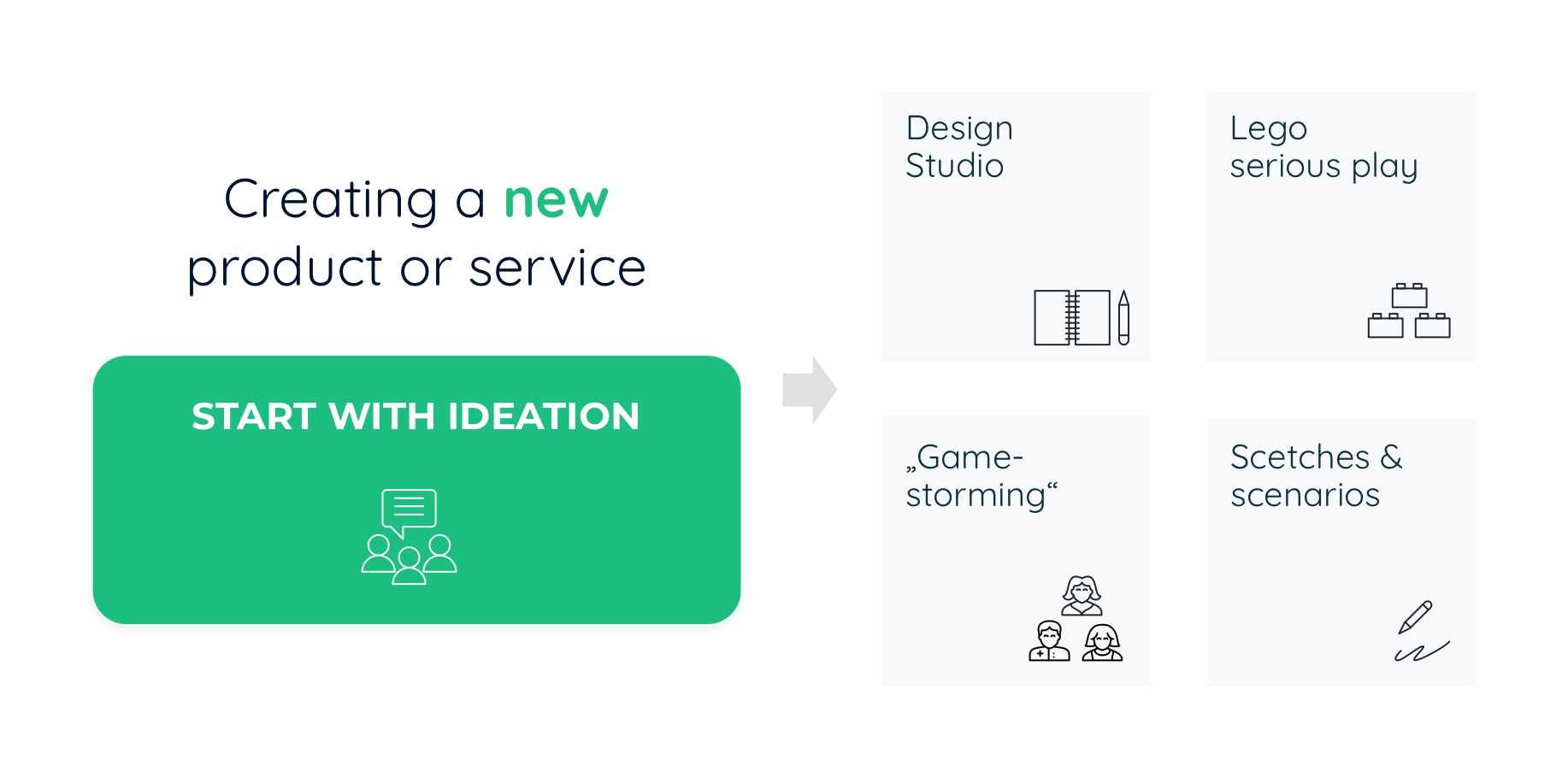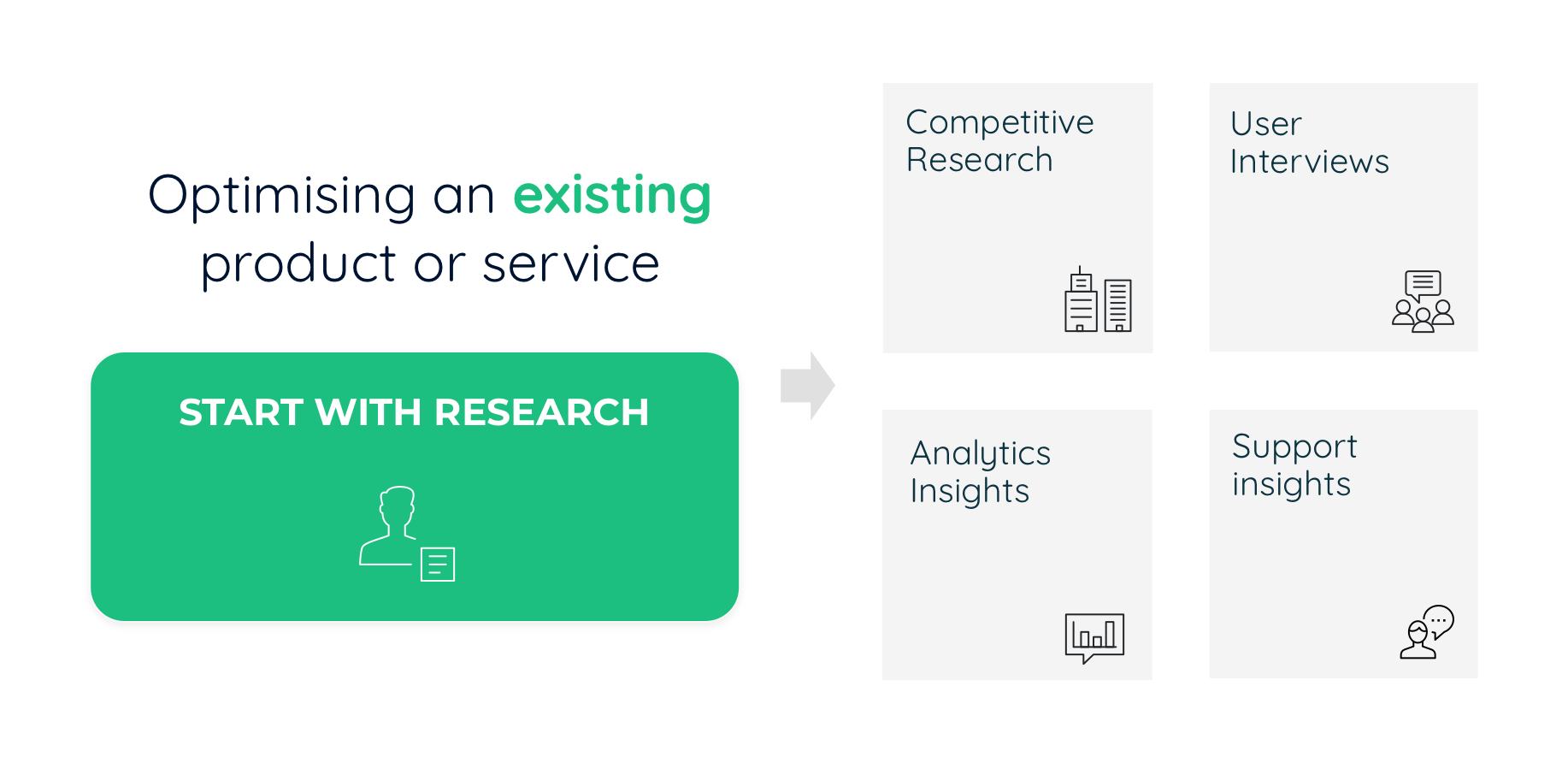
Requirements
- Method:Requirements gathering
- Outcome:User stories & epics
- Time spentFrom hours to weeks
- Used atMany projects
8 ways to gather requirements
Requirements are the foundations of any product and service. They should be derived from real user needs and business needs. Requirements define the what and why not the how. This is part of the design and development process which will come after at least some essential requirements have been gathered.
Optimisation or innovation?
The tasks differ if you are optimising an existing product or service or create a new, maybe even innovative product or service.
Gathering requirements for new products and services
As for all ideation workshops a design studio workshops needs careful and intensive preparation. The agenda should be really tight and pauses should be planned. Especially the tasks for the sessions and the problem the participants are working on have to be clear and tightly connected with the problem at hand.

1. Ideation methods: Design studio
The basic structure for design studio are 3 sessions for each complex problem. In the first session everybody is sketching as many ideas as possible in usually 10 to 15 minutes. Afterwards each participant has 3 to 5 minutes to present their ideas to the whole team.
For the second session the team is divided into groups with at least 3 team members and a maximum of 7. Each group will combine and remix their members ideas into one group solution, which will be presented to the other groups. For the third and final session the groups will work on a joint solution.
2. Ideation methods: Lego Serious Play
Lego Serious Play (LSP) is a facilitation method which is great for ideation workshops. In 2010 LSP was open sourced by the Lego Group, where it was developed and used internally for product and service development.
LSP workshops are fun and enable groups to work towards given objectives by building Lego models and landscapes, where models get connected to other models.
There is only one drawback: You need to have lots of bricks or invest in two facilitation kits which are around 700 € each.
3. Ideation methods: "Gamestorming"
"Gamestorming" is a handbook for facilitation by Dave Gray, Sunni Brown, James Macanufo from 2010.
LSP workshops are fun and enable groups to work towards given objectives by building Lego models and landscapes, where models get connected to other models.
There is only one drawback: You need to have lots of bricks or invest in two facilitation kits which are around 700 € each.
4. Ideation methods: Scetches & Scenarios
This a more of a personal discovery or for small teams of designers. Visualising ideas by sketching views or complete task oriented UI flows will help you to raise questions and come up with requirements.
A great way to visualise scenarios are storyboards. They should tell a story of future usage scenario of your product and service. Go for stick figures if you want to come up quickly with lots of different scenarios or iterate through one scenario before investing more time in more sophisticated illustrations.
Gathering requirements for optimisation of existing products and services
As for all ideation workshops a design studio workshops needs careful and intensive preparation. The agenda should be really tight and pauses should be planned. Especially the tasks for the sessions and the problem the participants are working on have to be clear and tightly connected with the problem at hand.

5. Research methods: Competitive research
The basic structure for design studio are 3 sessions for each complex problem. In the first session everybody is sketching as many ideas as possible in usually 10 to 15 minutes. Afterwards each participant has 3 to 5 minutes to present their ideas to the whole team.
For the second session the team is divided into groups with at least 3 team members and a maximum of 7. Each group will combine and remix their members ideas into one group solution, which will be presented to the other groups. For the third and final session the groups will work on a joint solution.
6. Research methods: User research
Lego Serious Play (LSP) is a facilitation method which is great for ideation workshops. In 2010 LSP was open sourced by the Lego Group, where it was developed and used internally for product and service development.
LSP workshops are fun and enable groups to work towards given objectives by building Lego models and landscapes, where models get connected to other models.
There is only one drawback: You need to have lots of bricks or invest in two facilitation kits which are around 700 € each.
7. Research methods: Analytics insights
"Gamestorming" is a handbook for facilitation by Dave Gray, Sunni Brown, James Macanufo from 2010.
LSP workshops are fun and enable groups to work towards given objectives by building Lego models and landscapes, where models get connected to other models.
There is only one drawback: You need to have lots of bricks or invest in two facilitation kits which are around 700 € each.
8. Research methods: Support insights
This a more of a personal discovery or for small teams of designers. Visualising ideas by sketching views or complete task oriented UI flows will help you to raise questions and come up with requirements.
A great way to visualise scenarios are storyboards. They should tell a story of future usage scenario of your product and service. Go for stick figures if you want to come up quickly with lots of different scenarios or iterate through one scenario before investing more time in more sophisticated illustrations.